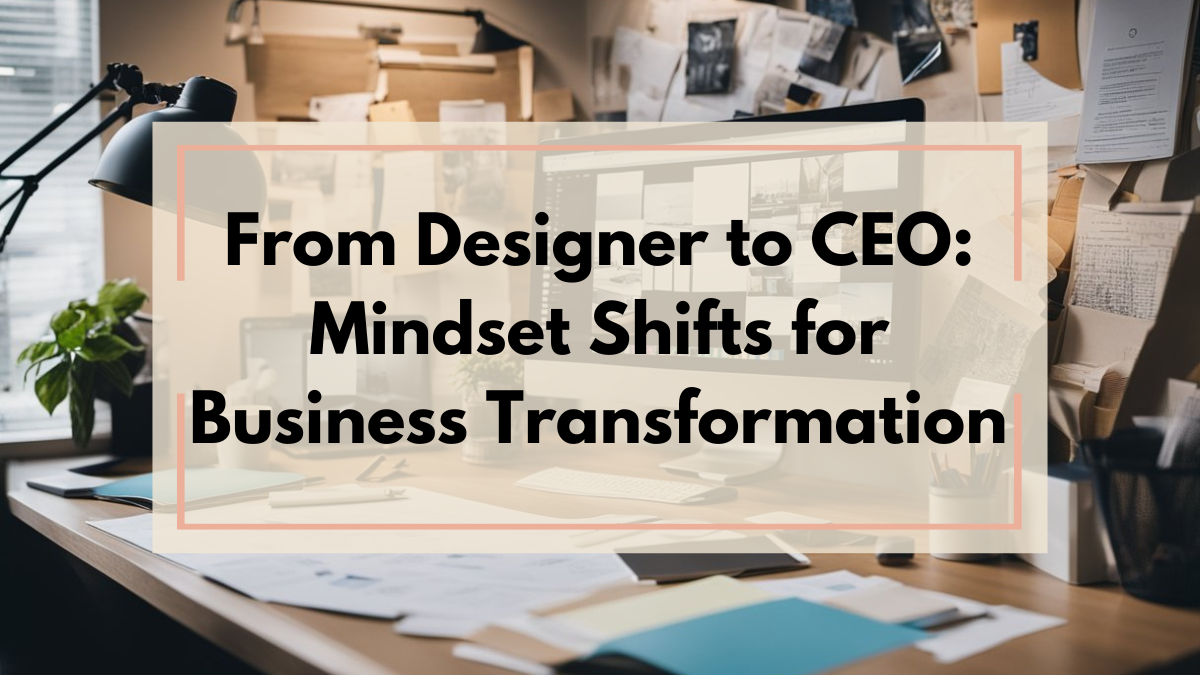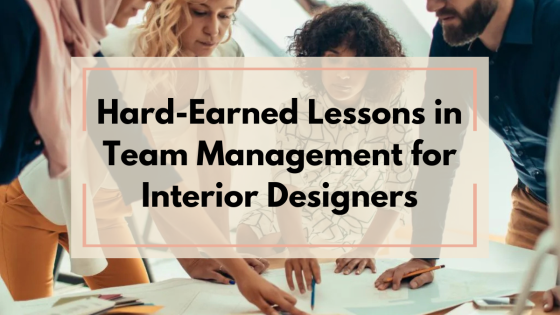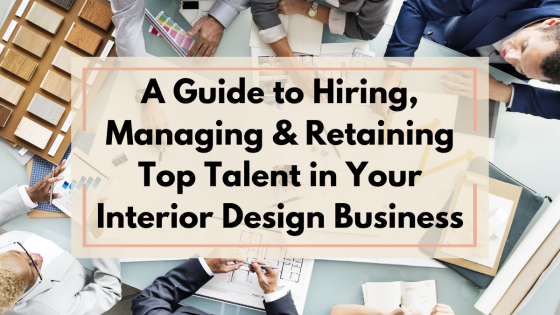From Designer to CEO: Mindset Shifts for Business Transformation

The greatest barrier between running a design practice and leading a thriving design firm isn't your creative ability or business acumen, it's the space between your ears. Every successful interior design CEO has discovered that the path to scaling their business begins with rewiring their internal operating system from "chief designer" to "visionary leader."
The transformation from designer to CEO requires more than just learning new business strategies or hiring team members. It demands a fundamental shift in how you view yourself, your time, and your role within your company. This journey isn't about abandoning your creative roots or losing touch with the artistic elements that drew you to interior design. Instead, it's about elevating your perspective to see the bigger picture while empowering others to execute your vision.
Consider this: when you started your design business, you were the artist, the project manager, the accountant, and the salesperson all rolled into one. This jack-of-all-trades approach served you well in the beginning, but now it's holding you back from reaching the next level. Today's successful design firm leaders understand that true growth comes from stepping back from the day-to-day design work to orchestrate a symphony of talented professionals who can collectively achieve more than any individual ever could.
Key Mindset Shifts
#1. The Creator to Leader Mindset
The first crucial mindset shift involves moving from a creator mindset to a leader mindset. As a designer, your instinct is to be hands-on with every project, personally selecting each fabric swatch and overseeing every installation. However, a CEO's role is to develop systems, standards, and processes that allow your unique vision to be executed consistently across multiple projects without your direct involvement.
This transition requires trust: trust in your team, trust in your processes, and most importantly, trust in yourself as a leader. Start by documenting your design philosophy, creating detailed style guides, and establishing clear project management protocols. These tools become the framework that allows your team to deliver results that meet your standards while freeing you to focus on strategic growth.
#2. Time Wealth vs. Time Poverty
Another critical shift involves your relationship with time. Many designers pride themselves on being available to clients around the clock, responding to every text and email personally. While this level of service might have built your reputation, it creates a ceiling for your growth. CEOs understand that their most valuable contribution comes from spending time on activities that multiply results rather than simply adding to them.
This means learning to delegate effectively, setting boundaries with clients, and investing time in activities that scale your business such as developing new service offerings, building strategic partnerships, or creating systems that improve efficiency. The goal is to transition from trading time for money to creating leverage through systems and team members.
67af08e562736_lg.png)
#3. The Financial Strategist Mindset
Perhaps the most significant transformation involves your relationship with money and business metrics. While designers often focus on project budgets and hourly rates, CEOs think in terms of profit margins, revenue streams, and return on investment. This shift requires developing a deeper understanding of financial statements, key performance indicators, and strategic planning.
Start viewing your firm as a business entity that happens to deliver beautiful designs, rather than a design practice that happens to make money. This perspective will help you make decisions based on both creative excellence and business sustainability. Consider implementing multiple revenue streams, such as product lines, consulting services, or digital offerings, rather than relying solely on project-based income.
#4. Building a Leadership Identity
The transition from designer to CEO also requires developing a strong leadership identity. This means shifting from being the person who does the work to being the person who sets the vision and empowers others to achieve it. It involves learning to communicate effectively with different stakeholders, from team members to investors, and developing the emotional intelligence to manage relationships at a higher level.
Practice stepping back and asking yourself strategic questions: What direction should the firm take in the next five years? What kinds of clients do we want to attract? How can we innovate in our service delivery? These questions help develop the strategic thinking muscles that every successful CEO needs.
67af0910e2191_lg.png)
Conclusion
The journey from designer to CEO is one of the most challenging yet rewarding transformations you'll experience in your professional life. It requires patience, self-awareness, and a willingness to step outside your comfort zone. Remember that this evolution doesn't happen overnight. It's a gradual process of small shifts that compound over time to create significant change.
Success in this transformation comes from understanding that becoming a CEO doesn't mean losing your creative soul. Instead, it means finding new ways to express that creativity through leadership, vision, and strategic thinking. Your design expertise becomes the foundation upon which you build a larger, more impactful business that can serve more clients and create opportunities for other talented professionals.
As you begin this journey, focus on making one mindset shift at a time. Start with the areas where you feel most comfortable making changes, and gradually work your way toward more challenging transitions. Remember that every successful design firm CEO has walked this path before you, facing similar doubts and challenges along the way. Your evolution from designer to CEO isn't just about growing a business, it's about growing into a leader who can make a broader impact in the design industry while creating a legacy that extends beyond your individual contributions.
I invite you to schedule a complimentary Strategy Session where we'll explore your vision for your design firm and identify the crucial mindset shifts that will unlock your next level of growth. During this focused conversation, we'll discuss your current challenges, your aspirations for your business, and the specific steps needed to bridge that gap. Click here to book your Strategy Session. Together, we'll craft a clear path forward that aligns with both your creative values and your business goals.
Thank you for reading ❤️
Categories: : Leadership and Management
 Rikaza Shakeer
Rikaza Shakeer 


